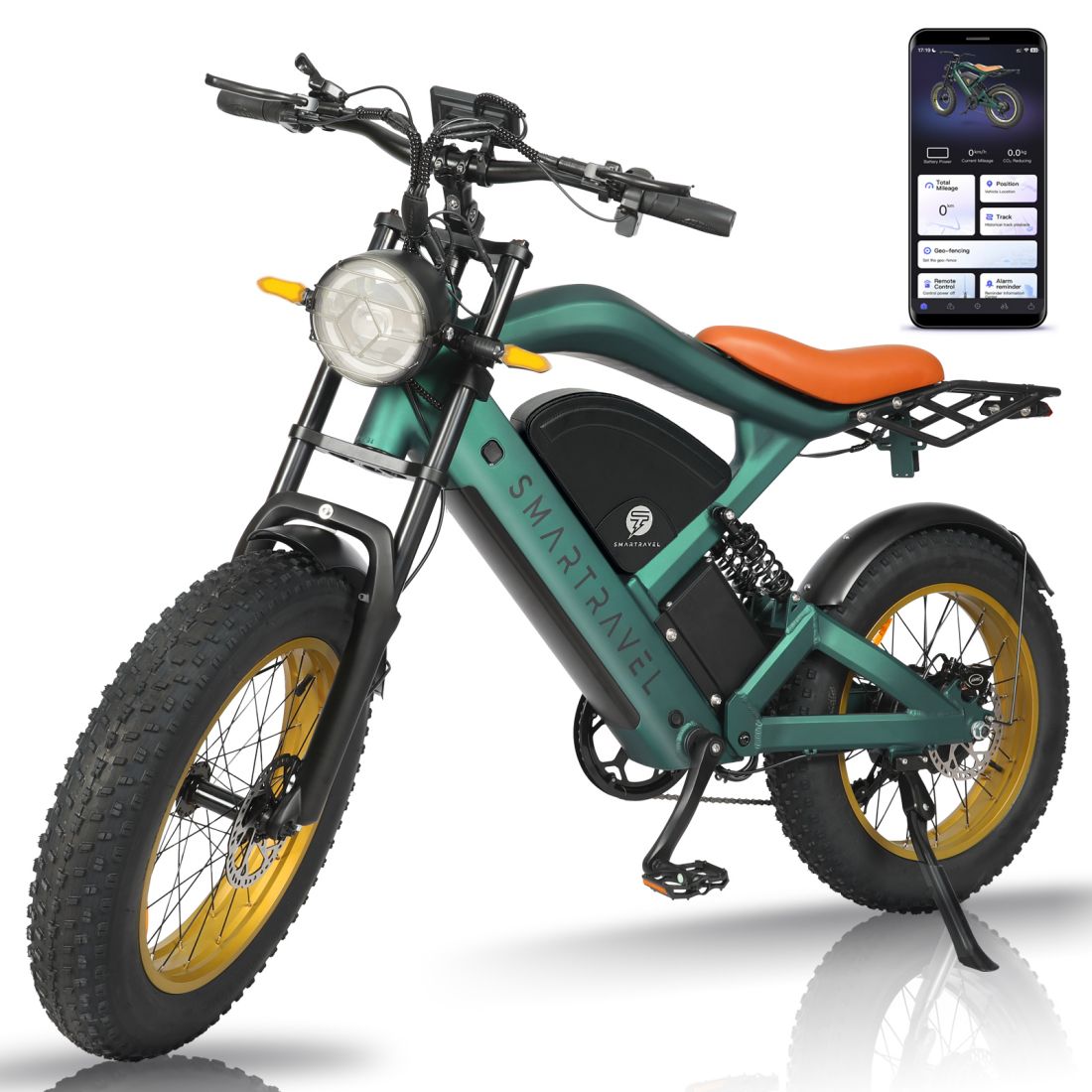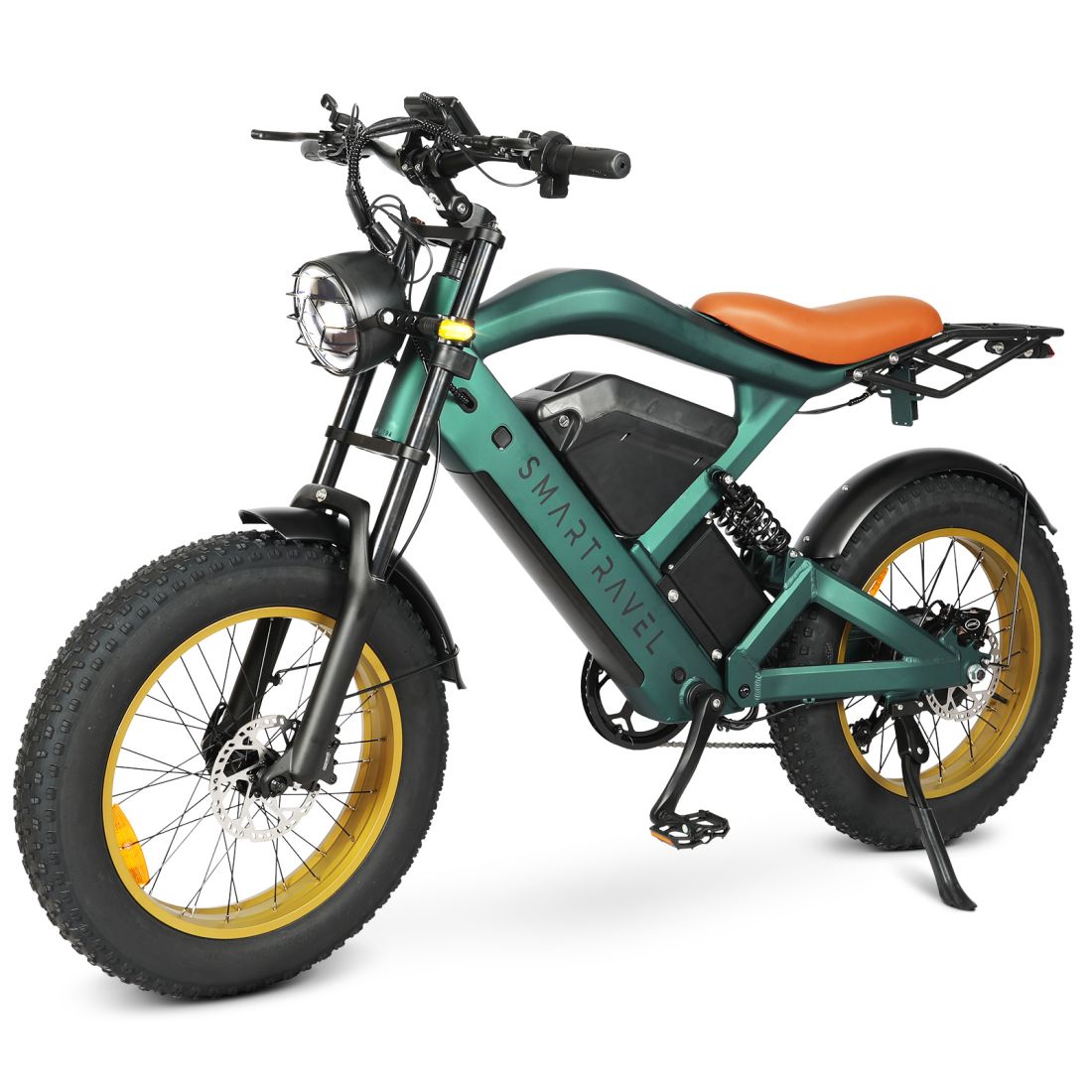Everything You Need to Know About E-bike Batteries

Electric vehicles have become a popular product because of their ease of use, which combines traditional pedals with electric power assist, which solves the problem of not being able to travel far while riding a bicycle and makes riding more fun. The key to achieving this breakthrough is in the battery.
What types of e-bike batteries are there?
The battery pack capacity is usually measured in watt-hours (W) or amp-hours (Ah). Common e-bike battery pack sizes range from 300 W to 700 W. The voltage is typically 36V or 48V. There are a few main types of e-bike batteries:
Lithium-ion (Li-ion) batteries: These are the most common type of e-bike battery. They are lightweight, have a high energy density, and can be recharged many times. Li-ion batteries come in different chemistries like lithium-nickel-manganese-cobalt oxide (NMC) and lithium-iron-phosphate (LFP).
Lead-acid batteries: These are heavier and have a lower energy density than Li-ion, but are cheaper. They are less commonly used in modern e-bikes.
Nickel-metal hydride (NiMH) batteries: These are less common in e-bikes now, as they have a shorter lifespan and lower energy density compared to Li-ion.
Lithium-polymer (Li-Po) batteries: These are similar to Li-ion but have a polymer electrolyte instead of a liquid one. They can have a higher energy density.
What Factors Affect E-Bike Battery Work
Battery capacity:
- The battery capacity, measured in Watt-hours (W), determines the total amount of energy the battery can store and deliver.
- Higher battery capacity allows for longer range and more work to be done before recharging.
Battery power:
- The battery's power output, measured in Watts (W), determines the maximum power it can deliver for acceleration, hill climbing, and high-speed riding.
- Higher battery power can provide more torque and better performance.
Battery chemistry and technology:
- The type of battery chemistry, such as lithium-ion (Li-ion) or lithium-polymer (Li-poly), affects the battery's energy density, power density, and longevity.
- Newer battery technologies, like high-energy-density Li-ion cells, can provide more range and power.
Battery management system (BMS):
- The BMS monitors the battery's state of charge, temperature, and other vital parameters to optimize performance and safety.
- An efficient BMS can improve battery longevity and prevent issues like overcharging or overheating.
Charging efficiency:
- The efficiency of the battery charger and charging process affects how much of the grid electricity is converted into stored energy in the battery.
- Faster charging rates may reduce the overall charging efficiency.
Ambient temperature:
- Extreme temperatures, both hot and cold, can reduce the battery's capacity and power output.
- Optimal battery performance is typically achieved within a moderate temperature range.
Battery age and wear:
- Over time, batteries gradually lose their capacity and power as they are used and recharged.
- Proper maintenance, such as avoiding deep discharges, can help prolong the battery's lifespan.
Battery usage patterns:
- The way the rider uses the e-bike, such as the frequency and duration of high-power demands, can impact the battery's performance and longevity.
- Moderate usage patterns that avoid excessive power demands can help maximize battery work and efficiency.

How to improve the life of electric bicycle batteries?
Charge Regularly: Avoid letting the battery fully discharge before charging. Partial charges are better for battery longevity than waiting until it's completely drained.
Avoid Overcharging: Don't leave the battery on the charger once it's fully charged. Overcharging can damage the battery over time.
Store Properly: When not in use, store the battery in a cool, dry place. Extreme heat or cold can degrade the battery.
Limit High-Speed Use: Riding at top speed puts more strain on the battery. Use higher speeds sparingly to prolong battery life.
Maintain Battery Temperature: Avoid leaving the e-bike in direct sunlight or very hot conditions, as high temperatures can damage the battery.
Calibrate the Battery Meter: Recalibrate the battery meter periodically to ensure it's accurately displaying the remaining charge.
Consider Battery Replacements: Most e-bike batteries last 2-5 years with proper care. Replace the battery when it starts losing significant capacity.
Upgrade to a Larger Battery: If you frequently run out of range, consider upgrading to a higher capacity battery to extend your ride time.
Use the Correct Charger: Only use the charger designed for your specific e-bike battery. Using the wrong charger can damage the battery.
Perform Occasional Full Discharges: From time to time, allow the battery to fully discharge before recharging to help calibrate the battery meter.
Following these tips can help maximize the lifespan of your electric bicycle's battery. Proper battery care is essential for getting the most out of your e-bike.




















